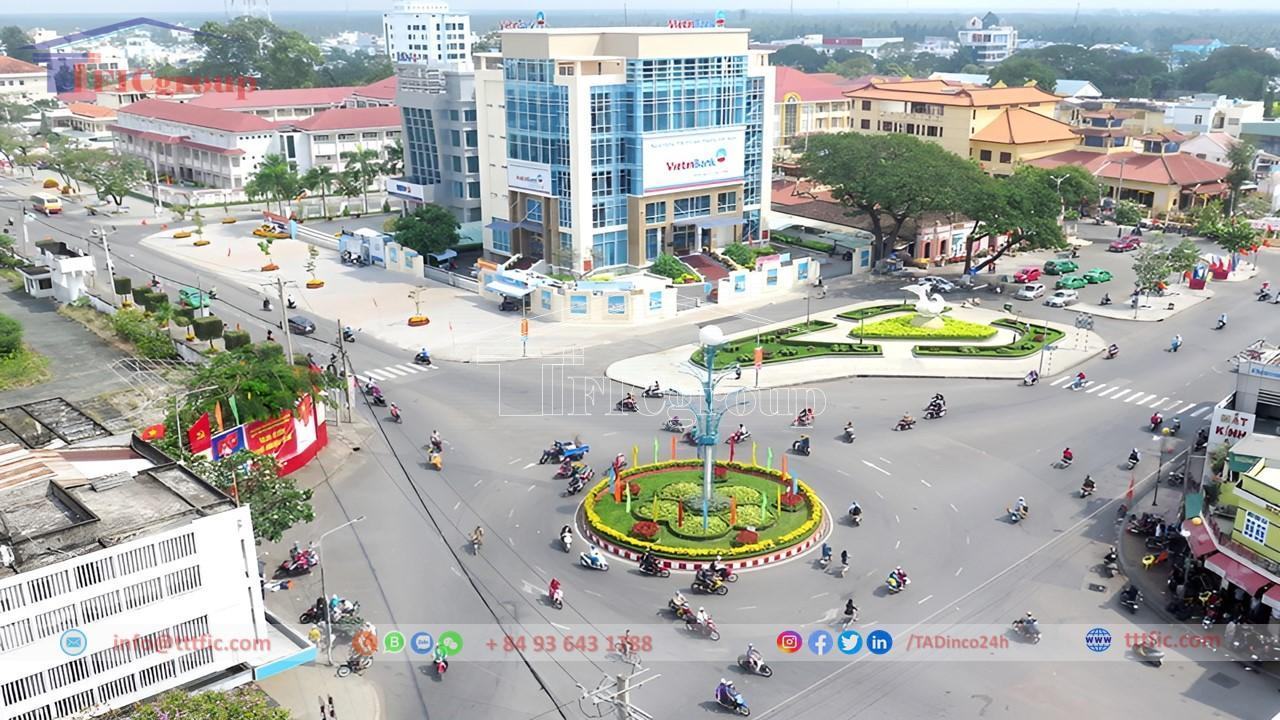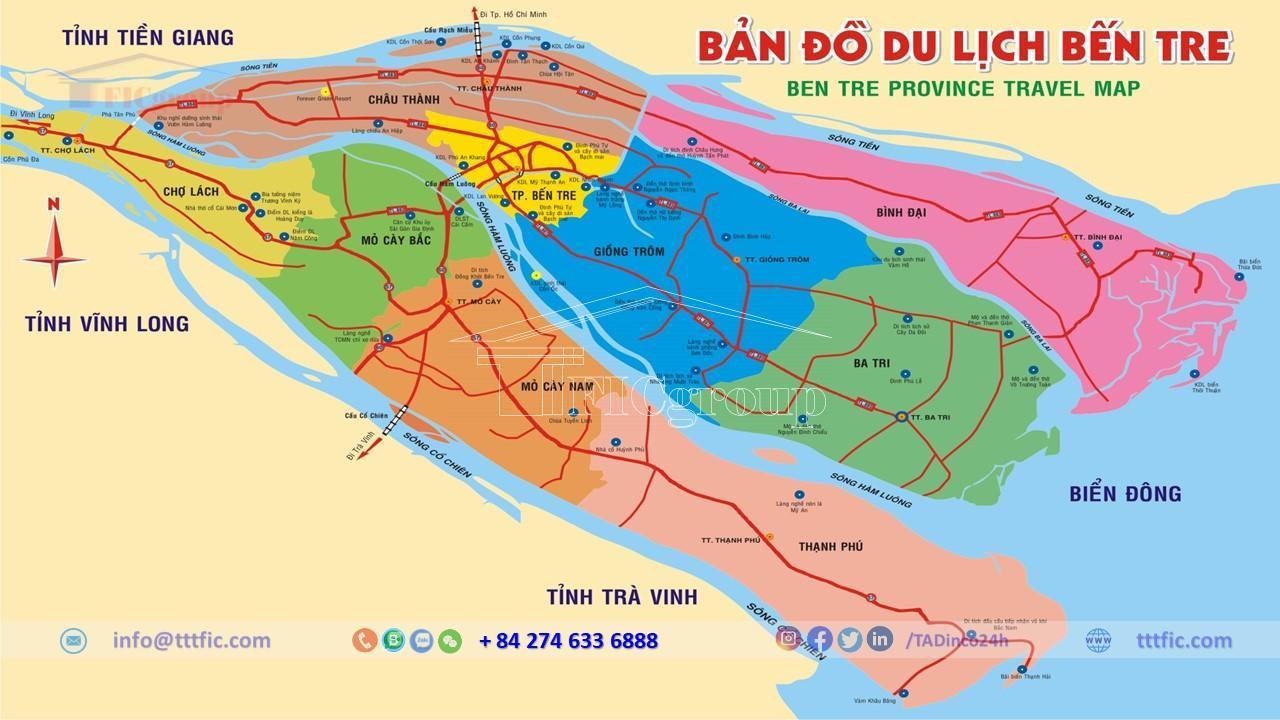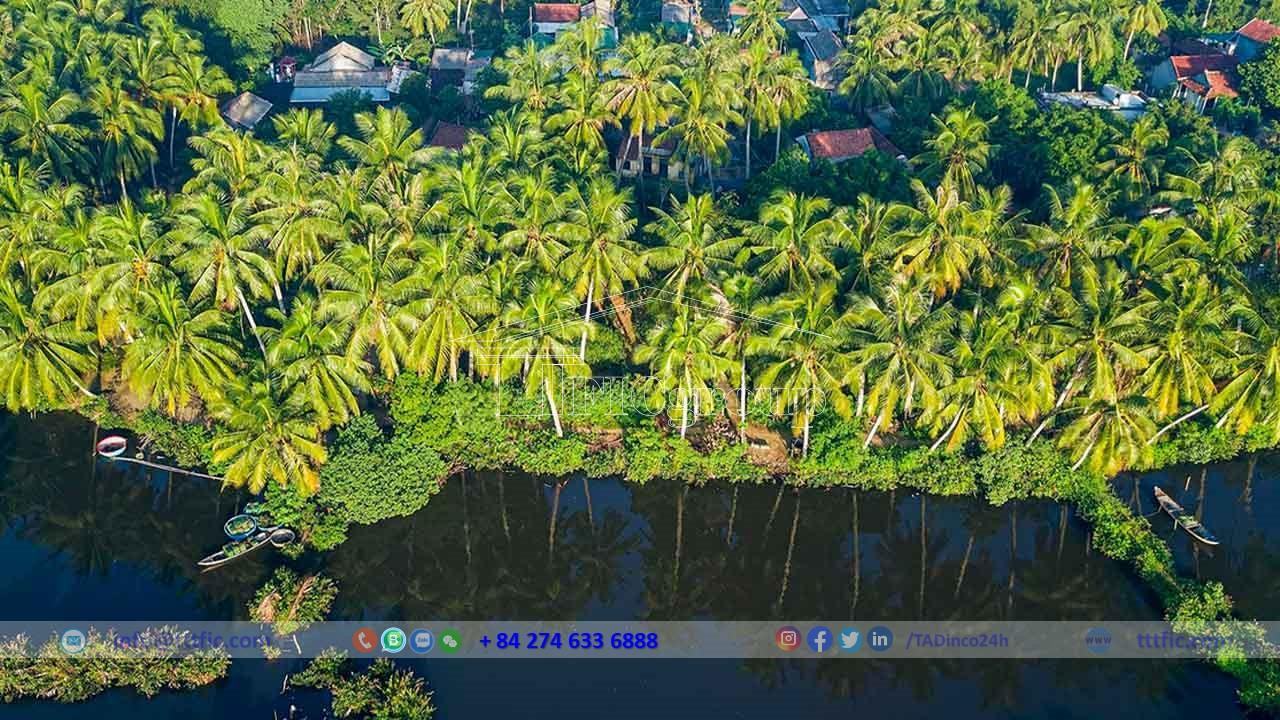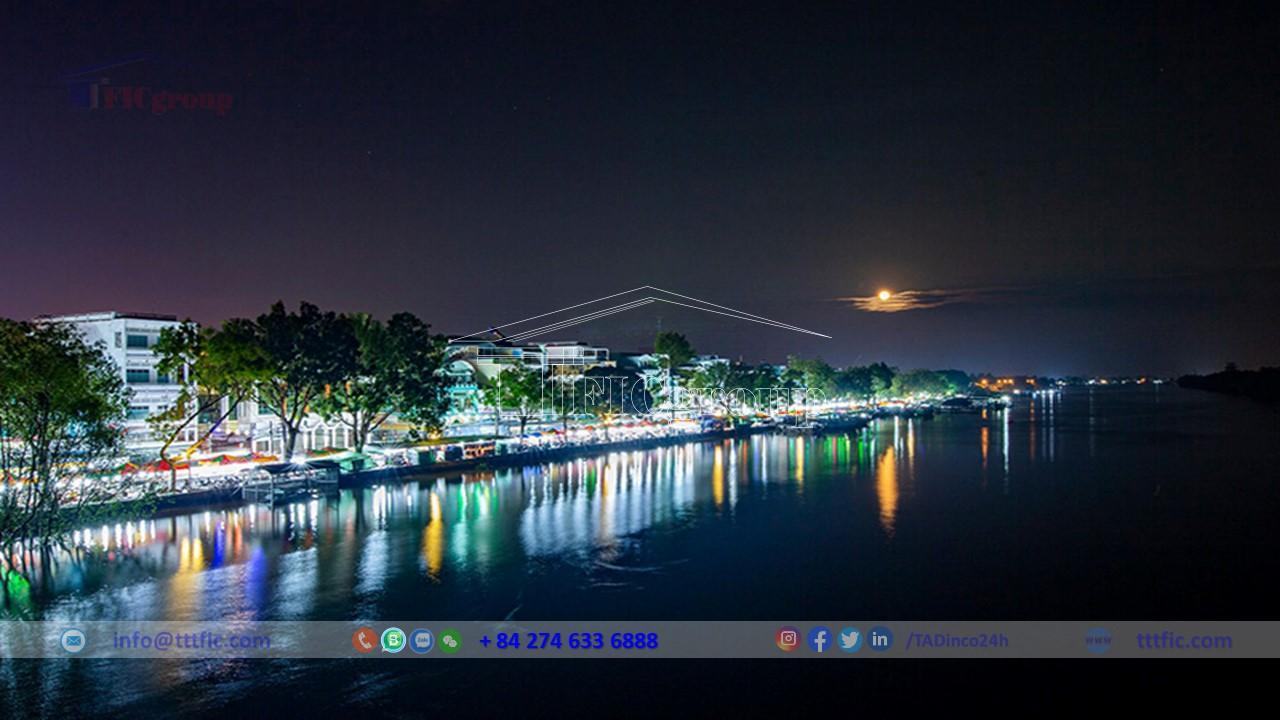
An Hiep Industrial Park
- Investor: Ben Tre Industrial Parks Infrastructure Development Company
- Price: 50 USD/m2
- Area: 72 Ha


Ben Tre province, shaped like a fan with its narrow end upriver, is riddled with canals.
It borders the East Sea to the east, with a 65 km coastline. To the west and south, it borders Vinh Long and Tra Vinh provinces, separated by the Co Chien River. To the north, it borders Tien Giang province, delineated by the Tien River.
Ben Tre’s geographical extremes are:
Ben Tre’s natural area is 2,360 km², situated on three islands: An Hoa, Bao, and Minh. These islands were formed by alluvial deposits from four branches of the Mekong River (Tien River – 83 km, Ba Lai River – 59 km, Ham Luong River – 71 km, Co Chien River – 82 km). This fertile alluvial soil nurtures lush fruit trees.
Ben Tre enjoys a tropical monsoon climate near the equator. It’s warm year-round with temperatures averaging 26-27°C. Northeast monsoon winds dominate from November to April, and southwest monsoon winds from May to October, creating distinct dry and rainy seasons.
The northeast monsoon season is dry, while the southwest monsoon season is humid. Annual rainfall averages 1,250-1,500mm, with the dry season only accounting for 2-6% of the yearly total. This climate is suitable for many crops, but pests, diseases, and fungi are common due to the humid conditions.
Ben Tre lies downstream of the Mekong River, bordering the East Sea. The province’s intricate river network, totaling nearly 6,000 km, is advantageous for water transport and plentiful fisheries. However, it presents challenges for road transport and water supply during the dry season when seawater infiltrates inland.

Despite pandemic challenges, agriculture in Ben Tre Province, Vietnam, is progressing positively. Coconut, a key crop, has seen a 3.2% increase in planting area to 77,248 hectares, with an encouraging production rebound to 512,773 tons. Meanwhile, the livestock sector is growing steadily, cattle numbers have increased by 2.44%, with a 4.29% increase in beef output. Similarly, pig numbers are up by 8.97%, with pork output reaching 53,060 tons, an increase of 6.87%.
The province’s aquaculture sector also reports positive numbers. The total aquaculture area increased by 2.95% to 46,845 hectares, reaching 98.52% of the yearly plan. Harvested produce increased by 31.56% to 250,583 tons. Notably, the shrimp farming area reached 36,020 hectares, contributing to a harvest of 68,969 tons, a 36.09% increase.
Farmed fish species like pangasius, clams, snakehead, tilapia, and giant catfish are also thriving, with stable prices contributing to higher incomes for farmers.
As for rural development, 17 communes in Ben Tre have met the new rural standards, and 7 have exceeded them, contributing to the province’s 80 new rural communes. This progress is driven by an investment of VND 934.233 trillion over the first nine months of the year.
According to the People’s Committee of Ben Tre Province, the industrial production value in September reached VND 3,300 billion, accumulating VND 27,220 billion in the first nine months of the year, showing a significant increase of 23.73% compared to the same period in 2021, reaching 71.07% of the annual plan.
Of this, the FDI sector achieved an estimated value of VND 12,650 billion, an increase of 24.02% compared to the same period last year. Meanwhile, the domestic sector reached VND 14,570 billion, showing a growth rate of 23.47% and reaching 71.07% of the annual plan.
Compared to the previous year, many key industrial products in the province experienced significant growth rates: beer increased by 21.59%, cigarette production rose by 28.27%, dried coconut rice saw a growth of 39.41%, coconut extract increased by 38.5%, and packaged coconut water rose by 24%.
The market in Ben Tre has remained stable, meeting people’s needs, with retail sales and consumer service revenue reaching VND 42,547 billion, a 15.47% increase compared to last year.
Exports have experienced significant growth, reaching USD 126.45 million in September and over USD 1.138 billion in the first nine months, a 25.04% increase.
FDI disbursement reached USD 3.17 million in September and a cumulative total of USD 36.07 million in the first nine months, exceeding the annual plan.
Ben Tre issued new investment registration certificates for two domestic projects with a registered capital of VND 92.3 billion, and made adjustments to seven projects, including three FDI projects, with a total registered capital of VND 2,718.15 billion. FDI enterprises have maintained stable operations.
Ben Tre province, as per the 2020 statistics, spans an area of 2,394 km², accommodating a population of 1,288,463 individuals, resulting in a population density of 538 people/km².
By April 1, 2019, the province’s population had reached 1,288,463 people, with a density of 533 people/km². Urban dwellers accounted for approximately 126,447 individuals, representing 9.8% of the total population, while the rural population totaled 1,162,016, constituting 90.2% of the populace. The male population stood at 630,492, with females totaling 657,971. The natural population growth rate was 0.26%, and the urbanization rate reached 23% by 2022.
As of April 1, 2019, Ben Tre province embraced twelve distinct religions, with a collective following of 210,413 adherents. Buddhism claimed the largest following with 106,914 devotees, trailed by Catholicism with 73,677 followers. Other religions included Cao Dai (17,020 followers), Protestantism (8,713 followers), Hoa Hao Buddhism (3,679 followers), Vietnamese Pure Land Buddhist Association (191 followers), and Tu An Hieu Nghia (115 followers). Islam had 61 followers, Minh Ly Dao had 24 followers, Minh Su Dao had 12 followers, Buu Son Ky Huong had four followers, and the Baha’i Faith had three followers.

Ben Tre is an ideal destination for ecotourism due to its preserved natural beauty, including lush coconut gardens and fruit orchards.
Notable tourist attractions include Vam Ho Bird Sanctuary, home to various wild bird species and abundant vegetation. Con Phung, located on a floating island, features unique architectural structures related to coconut religion and a crafts village.
Hung Phong Island (Con Oc) is renowned for its coconut and fruit gardens. Con Tien is a beautiful sandy beach that attracts numerous visitors every year. Other attractions include Cai Mon fruit gardens, Thua Duc Beach in Binh Dai district, and Tay Do Beach in Thanh Phu district.
Ben Tre also boasts cultural and historical sites, such as Hoi Ton Pagoda, Tuyen Linh Pagoda, and Vien Minh Pagoda. These pagodas have a rich history and unique architecture. Famous personalities, including poet Nguyen Dinh Chieu, martial artist Vo Truong Toan, and female general Nguyen Thi Dinh, have their tombs in the province.
The Coconut Festival, held in Ben Tre, has been organized five times. It promotes coconut products, encourages technological exchange, supports coconut cultivation, and boosts trade and tourism. The festival has grown from a local event to a national-scale celebration.
